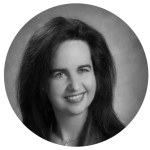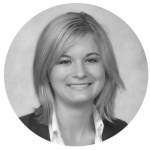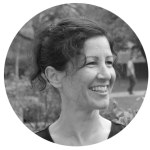As for the number of women Software Engineers in general, a little more information is available: Female Software Engineers are scarce. According to the US Bureau of Labor Statistics, about 22% of the workforce in the US software industry are women. That number is based on interviews with 60,000 US households [JOH13]. As it includes web designers, the number of women in Software Engineering is much lower. A recent survey of how many women are full-time Software Engineers puts the number at 12%, based on data reported for 3,594 engineers in 107 companies [CHO13].
The low number of women in Software Engineering is due to two factors:
- A low number of women choosing Software Engineering at university (In the US, women constitute less than 12% of graduating computer science majors [ZWE11], down from 14% five years ago [LEB12]. For Austria, these numbers range between 10% and 15% [SCH11]. For bachelor degrees, the US percentage is 18.2% [BAL13]) and
- The “leaky pipeline of women in engineering“, i.e. a high percentage of women leaving engineering between university and industry or in the first years of working in the industry.
The “leaky pipeline” is due to a number of causes. Founding a family is not the primary factor here (“Women leave before they have children or even get married.“ [STE13]). More importantly, women often are discriminated against [FOS09]. While those issues are very important, they have no direct relationship to Requirements Engineering. So we will focus on the first factor in the remainder of this article.
Rules of Attraction
As far as the low number of women enrolling in Software Engineering courses at the university is concerned, lack of information about what the course really is about plays an important role: “Inaccurate information about what occupations are actually like can lead to premature elimination of quite viable career options. For example, a young woman with excellent math skills may reject the possibility of becoming an engineer or computer scientist because she has a limited view of what engineers and computer scientists actually do.” [ECC07].
An important thing to note is that women base their decisions on course labeling, i.e. certain keywords in the name of the course: “Labeling seems to have a direct connection to how attractive a course is to female students.” [SCH11]. In [SCH11], the study paths of 42 curricula at 17 universities are analyzed concerning the fraction of women students. The author comes to the conclusion that women tend not to choose computer science courses that are limited to purely technological issues like programming, databases or networks. In short, women choose courses with “as much technology as necessary, but as little as possible. [...] The more a curriculum focuses on pure technology (programming, databases, networks, foundations of IT, few other areas) and the more it is labeled accordingly, the lower the portion of women students.” [SCH11].
On the other hand, women are especially drawn to computer science courses that emphasize the connection to other fields. Eliciting requirements in a certain application domain needs both expertise in Requirements Engineering techniques and a certain degree of domain knowledge. So the mere fact that women prefer connecting technology issues with non-technology issues makes Requirements Engineering particularly suitable to them.
What non-technology issues are of particular interest to women? To answer that question, it is helpful to look at the areas of study that have been the most attractive to women over the past years. For Germany, the top three are [SBA11]:
- Business
- Language (German ranks 2nd, English ranks 8th)
- Law
This is markedly different from the preferences of male students. For them, the most interesting areas of study are Business, Mechanical Engineering and Computer Science [SBA11].
Comparing Curricula
We have mapped the three main interests of women students to five of the major curricula in Software Engineering:
- Requirements Engineering. CPRE Foundation: the Certified Professional for Requirements Engineering (IREB) – Foundation [CPRE-F12].
- Requirements Engineering. CPRE Elicitation: the Certified Professional for Requirements Engineering (IREB) – Advanced (Elicitation & Consolidation) [CPRE-A12]
- Modeling. OCUP: OMG Certified UML Professional – Fundamental [OMG14]
- Architecture. CPSA: the Certified Professional for Software Architecture (ISAQB) – Foundation [CPSA09]
- Testing. Certfied Tester: the Certified Tester (ISTQB) – Foundation [ISTQB11]
The following table shows how often business, language and law issues are brought up in those curricula:
| Business | Language | Law | |
|---|---|---|---|
| CPRE Foundation | 1 | 22 | 5 |
| CPRE Elicitation | 10 | 23 | 0 |
| OCUP | 0 | 0 | 0 |
| CPSA | 7 | 0 | 0 |
| Certified Tester | 10 | 0 | 13 |
The numbers are based on the occurrences of keywords:
| Included references | Excluded references | |
|---|---|---|
| Business | business analysis / engineeringb business processes / procedures / scenarios business value / risk / case business rules / models marketing |
|
| Language | natural language communication interview |
scripting languages computer-to-computer communication |
| Law | law regulation contract legal requirement legal obligation |
exam regulations |
Moreover, references to the keywords in the table of contents and in the list of sources were excluded.
The results are interesting: CPRE Foundation is an excellent choice for women, mainly – but not only – because of its strong emphasis on natural language as an instrument to describe requirements. CPRE Elicitation is the most interesting curriculum when it comes to business and legal issues.
Because of the labeling-effect, the wording of Requirements Engineering curricula needs to emphasize the close connections to business, language and law as much as possible. Redesigning computer science curricula can improve their attractiveness enormously: At Carnegie Mellon the percentage of women entering the School of Computer Science rose from 7% in 1995 to 42% in 2000 [MAF02]. The measures that were taken to increase that number include a stronger focus on
- real-world examples instead of artificial ones,
- relationships to other curricula,
- usability and
- natural language text [MAF02].
Ditact as a best-practice example
Research also indicates that integrating engineering into summer courses, i.e. additional classes held in the summer, is a very effective approach to make engineering more attractive to women [GRA13]. In the German-speaking world, the Ditact initiative is an excellent example.
Ditact is a gender-affirmation program at the University of Salzburg, Austria, offering to women almost 40 summer courses in various fields of information technology at a low price. The goal of Ditact is to encourage women to enter the information technology industry.
A core element of the Ditact course offering is Requirements Engineering. Participants are prepared for the CPRE Foundation level exam. As Alexandra Kreuzeder, project manager at Ditact, states: “Requirements Engineering is an important subject within IT. Ditact wants to convey more information to women about what the job of a Requirements Engineer entails, to motivate women to take part in our courses, take the certification exam and work successfully as Requirements Engineers.”
Maria-Therese Teichmann, the designer of the Requirements Engineering course at Ditact, is well aware of the importance of emphasizing how well Requirements Engineering bridges the gap between technology-related issues and non-technology topics: “When designing the training, I stressed particularly how helpful knowledge of the application domain is. Business, natural language and contractual issues are at the core of the course, supplemented with many examples from my 15-year career as a Requirements Engineer.”
One of the participants, Eva Gebetsroither, states: “Working as a technical translator, I first came in touch with Requirements Engineering by translating requirements specification documents. Over the years, I got deeper into Requirements Engineering and focused on the topic of how to write good requirements in natural language. Meanwhile I also stepped into UML and for several years I have been doing CPRE training for requirements engineers. For me, Requirements Engineering is a wonderful mix of technical and non-technical methods, which enables me to use my language skills to contribute to quality and ultimately to customer satisfaction in IT projects.”
Another participant, Corinna Unterfurtner, adds: “Even though I had already studied Public Relations and Corporate Communication, it was the Requirements Engineering course at Ditact that provided the biggest boost to my career. I found a job as a Project and Requirements Manager for a software company developing ERP-software and I am totally satisfied with it.”
References
- [BAL13] Brittany Ballenstedt, Too Few Women in Fed Tech Jobs; Too Many Challenges for Them,
- [CAN12] Kendra Carr, Nan Niu, Women in Software Requirements Engineering: An Exploratory Study, 2012 ASEE Southeast Section Conference, 2012,
- [CHO13] Tracy Chou, Where are the Numbers, Grace Hopper Conference 2013,
- [CPRE-A12] Curriculum Certified Professional for Requirements Engineering – Advanced Level Elicitation and Consolidation, Version 1.0, 2012,
- [CPRE-F12] Curriculum Certified Professional for Requirements Engineering – Foundation Level, Version 2.1, 2012,
- [CPSA09] Curriculum Certified Professional for Software Architecture – Foundation Level, Version 2.0, 2009,
- [ECC07] Jacquelynne S. Eccles, Where are all the women? Gender differences in participation in physical sciences and engineering. in Stephen J. Ceci, Wendy M. Williams, Why aren’t more women in science?, American Psychological Association, 2007,
- [FOS09] Nadya A. Fouad, Romila Singh, Stemming the Tide: Why women leave engineering, University of Wisconsin-Milwaukee, 2009
- [GRA13] Allie Grasgreen, Strategy for Women in STEM,
- [ISTQB11] Curriculum Certified Tester – Foundation Level, Version 2011,
- [JOH13] Phil Johnson, Female Software Engineers may be even scarcer than thought,
- [LEB12] Ari Levy, Willow Bay, Women Flock to Startups While Trailing in Computer Science: Tech,
- [MAF02] Jane Margolis, Allan Fisher, Unlocking the Clubhouse: Women in Computing (MIT Press, 2002).
- [OMG14] OMG Certified UML Professional Curriculum,
- [SBA11] Statistisches Bundesamt, Die am stärksten besetzten Studienfächer WS 2011/2012,
- [SCH11] Susanne Schwanzer. Projekt GEMIS – Gender Mainstreaming in informatiknahen Studiengängen, Technikum Wien, 2011
- [STE13] Bill Steele, Something about STEM drives women out,
- [ZWE11] Stuart Zweben, Computing Degree and Enrollment Trends, Computing Research Association,









































































































































